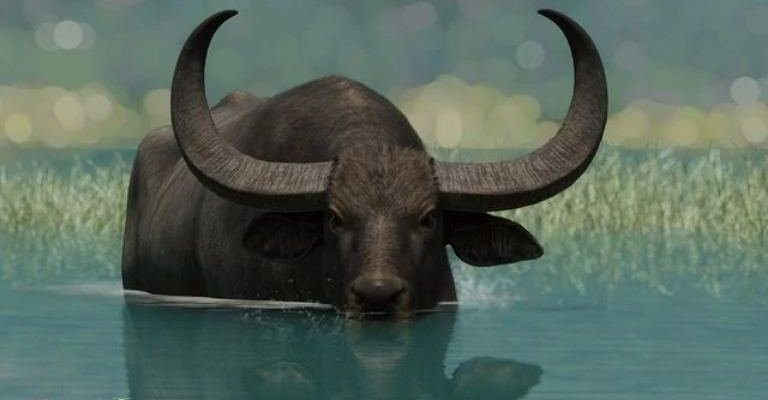
Water buffaloes aren’t just strong; they are also social, adaptable, and surprisingly clever. So, let’s dive deep into understanding just how smart water buffaloes really are. We’ll explore their behavior, problem-solving skills, social interactions, and much more. By the end, you’ll have a fresh perspective on these incredible animals, whether you’re a curious novice or someone who’s keen on animal behavior.
Understanding Water Buffalo Behavior
Water buffaloes are fascinating creatures with a unique set of behaviors that showcase their intelligence. These animals are known for their strong social bonds and group dynamics. In the wild, water buffaloes tend to live in herds, which can consist of up to 100 members. Living in a herd helps them stay safe from predators and allows them to communicate effectively with each other.
Their social interactions play a big role in their cognitive abilities. Just like we rely on our friends for support and fun, water buffaloes do the same. They engage in grooming each other, which strengthens social ties and reduces stress. You might even see them forming alliances or helping each other out, showcasing their impressive social intelligence.
Another interesting behavior is their ability to adapt to different environments. Whether they’re in muddy wetlands or rocky hills, water buffaloes show remarkable flexibility in finding food and shelter. This adaptability indicates a level of problem-solving ability that is certainly admirable.
Problem-Solving Skills in Water Buffalo
When it comes to tackling challenges, water buffaloes demonstrate surprising ingenuity. For instance, if a water buffalo encounters a barrier, like a fence, it doesn’t just give up and wander away. Instead, it will often try different strategies to get around it. You might see one testing out various routes or even using its strength to push against the barrier. This ability to think creatively about overcoming obstacles is a clear sign of intelligence.
In experiments, water buffaloes have shown the capacity to understand cause-and-effect relationships. For example, if a water buffalo learns that pressing a certain button releases food, it will remember this and repeat the action. This kind of learning indicates a sophisticated level of cognitive processing, akin to how many pets learn to associate certain actions with rewards.
They also exhibit an understanding of their environment. Water buffaloes can remember where to find water and food sources even in unfamiliar terrain. This spatial awareness is critical for survival, especially in the wild where resources can be scarce.
Communication Skills
Just like us, water buffaloes communicate with one another. They use a wide range of vocalizations, body language, and even facial expressions to express their feelings and intentions. For instance, a low grunt might indicate contentment, while a loud bellow can signal distress or alarm. This ability to convey emotions and messages is vital for maintaining social structures within the herd.
Interestingly, water buffaloes can also recognize individual calls. This means they can distinguish between the sounds made by different members of their herd. Imagine being able to pick out your friend’s voice in a crowded room; that’s how intuitive these animals can be!
Moreover, they use non-verbal cues as well. When one buffalo needs something, such as to lead the herd to grazing grounds, it may display specific body movements to signal its intentions. Watching these interactions unfold provides a fascinating glimpse into their social intelligence.
Emotional Intelligence
Water buffaloes have the ability to express emotions in ways that many people might not expect. They can form strong attachments, not only with their herd members but also with humans. Farmers often report that their water buffaloes recognize them and display behaviors that suggest affection and trust, such as nuzzling or following closely.
This emotional connection hints at their capacity for empathy. For example, if one buffalo is distressed—perhaps because it’s separated from the herd—others may respond by trying to comfort it or even coming to its aid. Watching these interactions can make you feel like you’re witnessing a heartwarming story unfold right before your eyes.
Moreover, studies indicate that water buffaloes possess a level of emotional awareness. They can react to the moods of other herd members, adjusting their behavior accordingly. This responsiveness adds another layer to their intelligence, showing that they are not just reacting to the world around them but also considering the feelings of their companions.
Learning and Memory
One of the standout features of water buffalo intelligence is their impressive learning and memory capabilities. These animals can learn through observation, which means they pick up on new behavior by watching others. For example, if a younger buffalo sees an older one successfully using a tool to reach food, it is likely to try the same method in future situations.
In addition, water buffaloes possess strong long-term memory. They are known to remember locations, social bonds, and even experiences with humans for years. This ability serves them well, especially in environments where recalling the location of food and water can be a matter of survival.
To illustrate this, consider a scenario where a water buffalo encounters a specific path to food. If it has a positive experience there, it will likely remember that path and use it again and again. This memory helps them navigate their landscape effectively, ensuring they can thrive in their environment.
Comparing Intelligence Levels
When we talk about animal intelligence, it’s tempting to rank creatures on a scale. Water buffaloes might not be the first species that come to mind when you think of smart animals, but they certainly hold their own against some of the more recognized intelligent species.
For instance, when compared to elephants—often hailed for their intelligence—water buffaloes exhibit different kinds of smarts. While elephants might excel in problem-solving and memory, water buffaloes shine in social intelligence and adaptability. Each species has its unique strengths, making direct comparisons tricky but fascinating.
Another smart animal is the dog. When it comes to training and following commands, dogs might have the upper hand. However, water buffaloes showcase their intelligence in a different light, showing how they navigate complex social structures and environmental challenges. It’s a reminder that intelligence comes in numerous forms and should be appreciated in all its diversity.
Understanding how smart water buffaloes are opens up a whole new world of appreciation for these animals. From their social bonds to their problem-solving abilities, these creatures show us that intelligence isn’t just about how we define it, but also how it manifests across different species.
Next time you see a water buffalo, remember that there’s more to them than meets the eye. They’re not just gentle giants; they’re clever beings with emotional depth and social awareness. As we continue to learn about them, we can celebrate their unique abilities and ensure they are valued for the intelligence they possess. So, let’s give a round of applause to the water buffalo—one of nature’s unsung smart animals!

